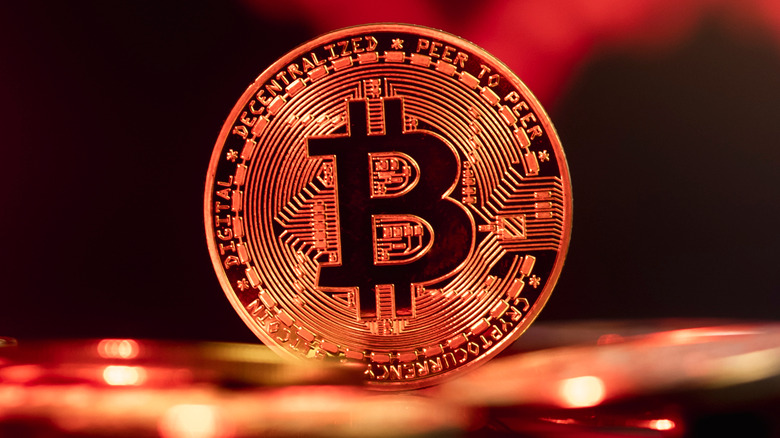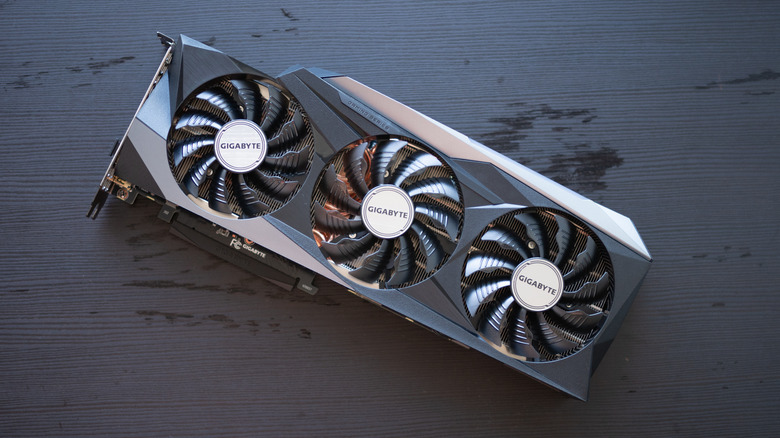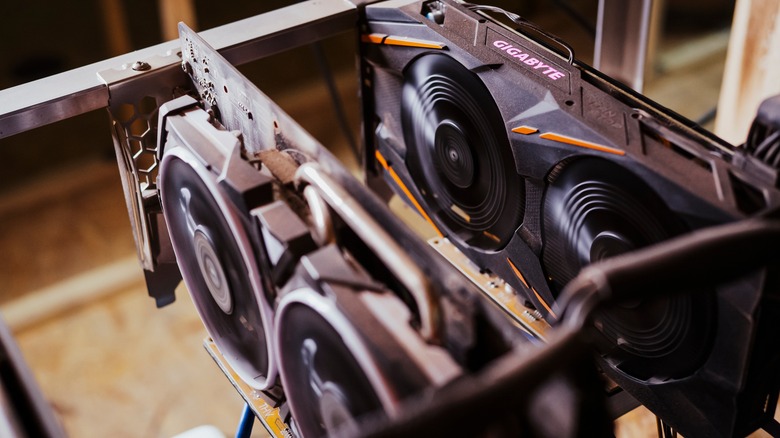Why The Crypto Crash Is Great News For Gamers
The crypto market is crashing hard, and investors are seeing the value of their portfolios rapidly drop — but the crypto crash isn't bad news for everyone. Cryptocurrencies have been down across the board since the start of the year, but have seen an even bigger dip lately. The global market cap — that is, the combined value of all cryptocurrencies — dropped by $80 billion between June 15 and 16 alone.
As of June 16, all major cryptocurrencies have seen significant drops from the highs they hit just a few months ago. Bitcoin, which peaked at $69,000, is now worth less than a third of that at $21,000, and Ethereum, which has traded as high as $4,811, is now down to $1,117 (via CoinDesk). The wider crypto market is also being hit hard, with stable coin (a coin tied to the value of the US dollar) Terra disappearing next month, and crypto depositing company Celsius in severe trouble.
Crypto miners, who keep the blockchain going and receive cryptocurrency as a reward for their efforts, have also seen profits tank. Some of them are now making less than a dollar a day once costs are factored in, and may not see the point of continuing in the current climate ... which is fantastic news for the PC gaming community.
Good news for gamers
Sky-high GPU prices have plagued PC gamers for years. While crypto mining wasn't the only factor driving up prices, it was a major driver of GPU scarcity. Miners tended to have the funds to pay two or three times the MSRP for a high-end graphics card, while gamers were left faced with a choice of either paying significantly more than the rest of their rig combined — or just not bothering. In May, high-end GPUs were not only back in stock but available at the manufacturer's specified retail price. And then the crypto market dipped again, taking the profitability of crypto mining and subsequently GPU prices further down with it. Some GPUs are already available for over a third less than they were selling for just a few months ago.
This has all happened before. When the crypto market crashed in 2018, suppliers found themselves with a massive overstock of graphics cards, and prices took a major plunge as a result. Gamers could pick up a high-end RX 570 4GB for around the same price as a lower-end RX 560, which offered around half of the 570's capability (via Tom's Hardware). If the current crash follows the same trend, gamers might be able to pick up the card of their dreams for significantly less than its retail price, and a fraction of the cost it was a few months ago. Gamers who have been desperate for an upgrade or planning a new build during the shortage may see the crash as an ideal time to make a move. There may also be bargains to be had on the second-hand market as crypto miners try and claw back cash by selling their used equipment — but those deals may not be as good as they look.
Should you buy a GPU that was used for mining?
If the crash makes crypto miners scale back their operations, we could see the market flooded with cheap, used graphics cards. But while a high-end card up for sale at a fraction of its original cost may be tempting, is it actually a good deal? Well, we still don't know, but various experts have offered differing opinions on the matter. A study from card manufacturer Palit Microsystems claims a card used for mining 24 hours per day, seven days per week, will lose 10% of its performance each year. The findings were released after the market was flooded by cheap second-hand cards following a crackdown on crypto by the Chinese government. PC Gamer says it is extremely difficult to tell if a second-hand GPU has been used for mining or gaming, which would make all used cards suspect by default.
Linus of Linus Tech Tips thoroughly tested a GPU that had been used for intensive mining against a brand new GPU of the same make and model. He found no performance difference between the two cards and described the situation as "binary," saying a used card will either work or it won't. What it will not do is lose a percentage of its performance due to what it has been used for. However, he did point out that if the card is poorly maintained (not cleaned regularly) the build-up of dust could cause cooling issues which would prevent the card from running efficiently and impact its performance. Linus goes on to recommend taking the risk with a used GPU if it is available at a significant discount, such as 50%. He also says the condition of the card and its cooling system should be inspected before purchase if possible.


